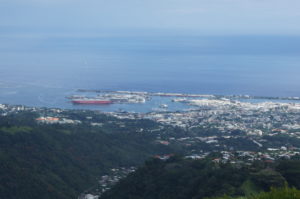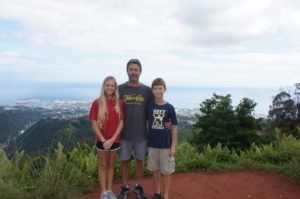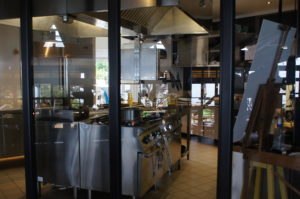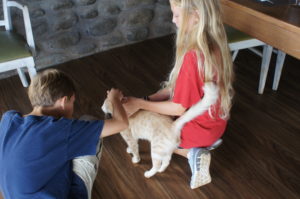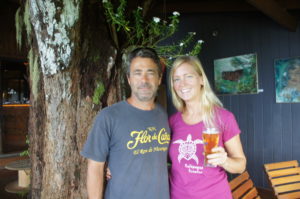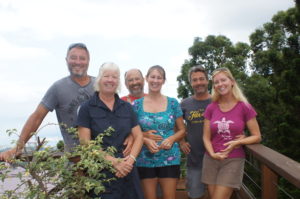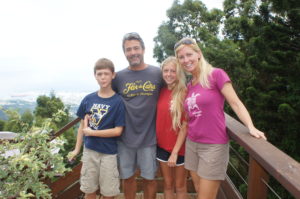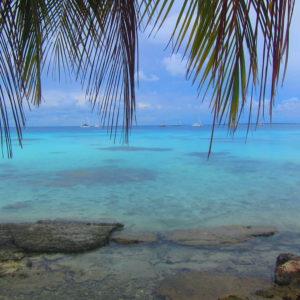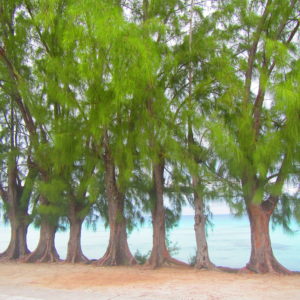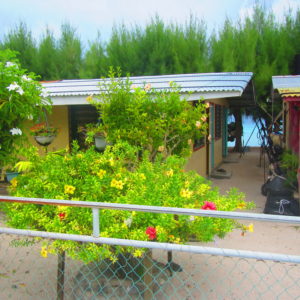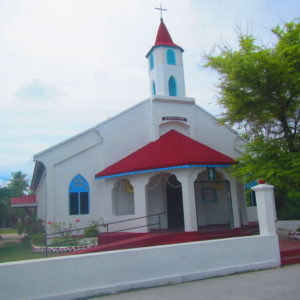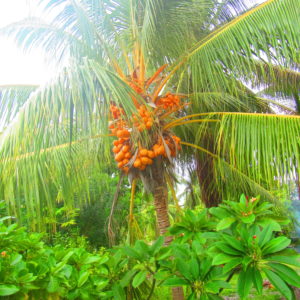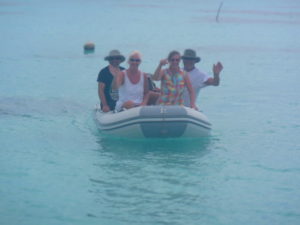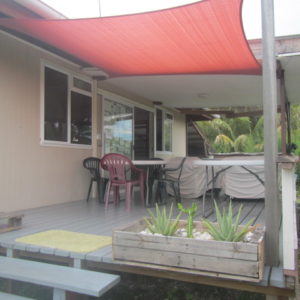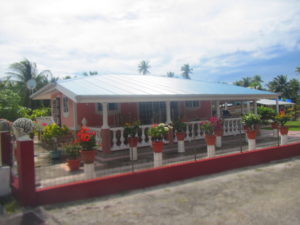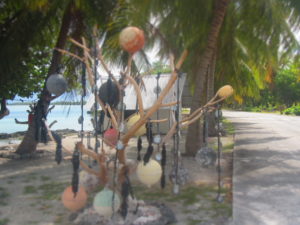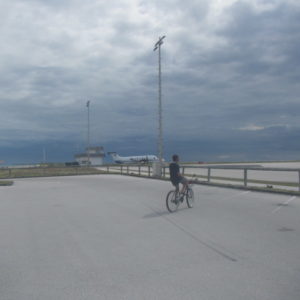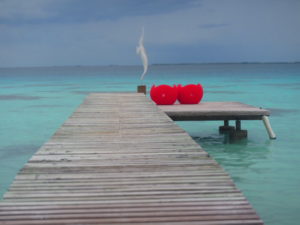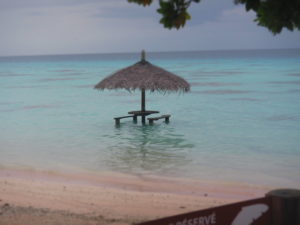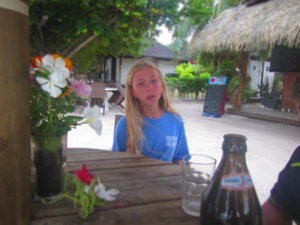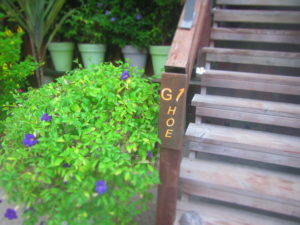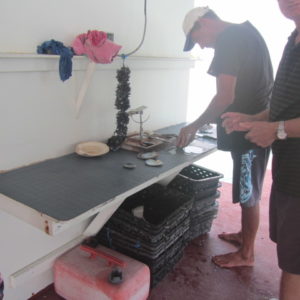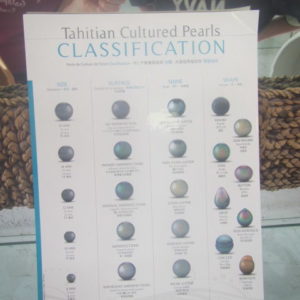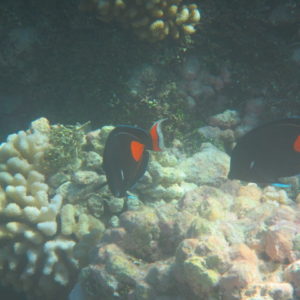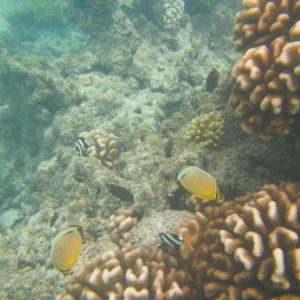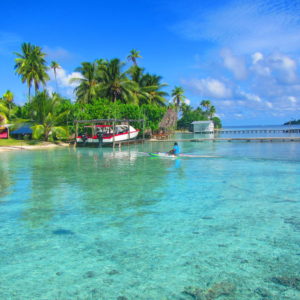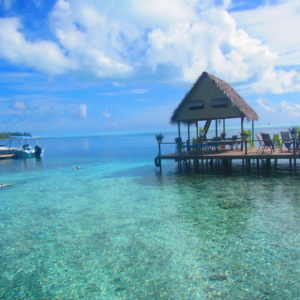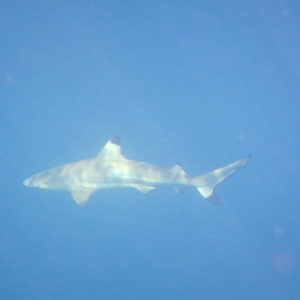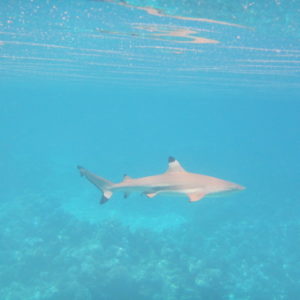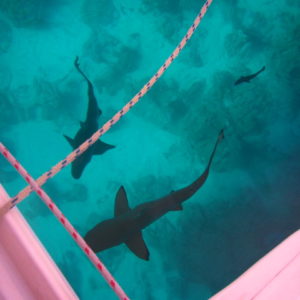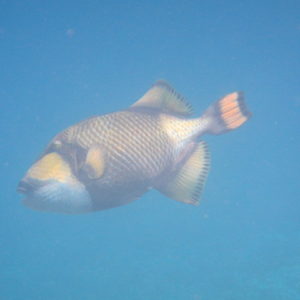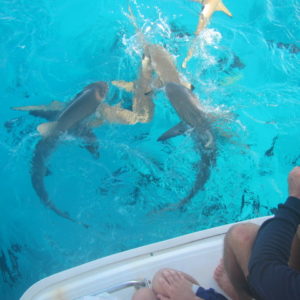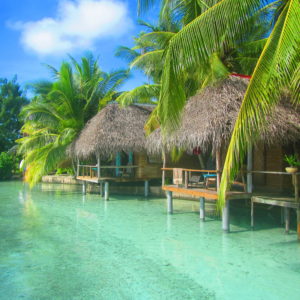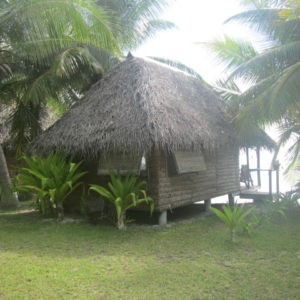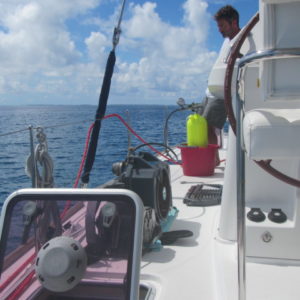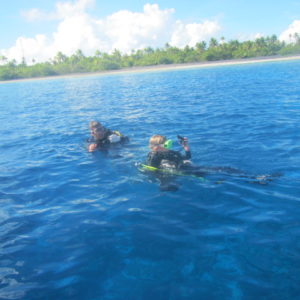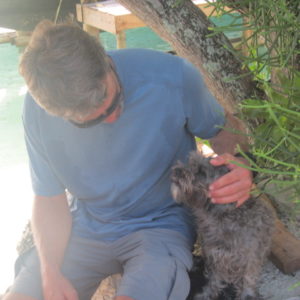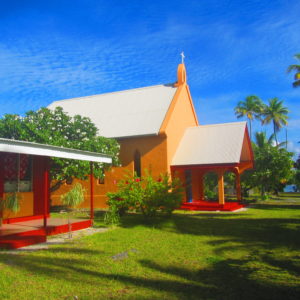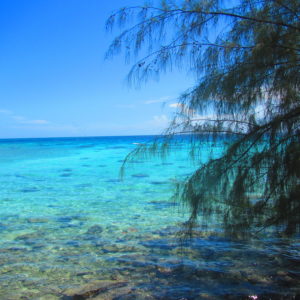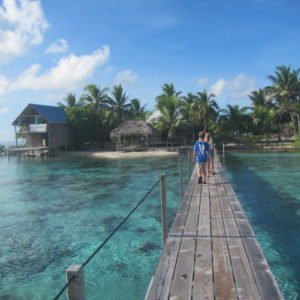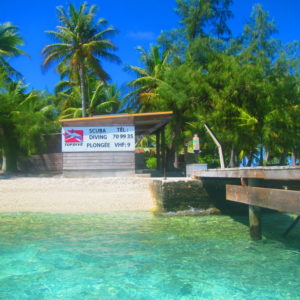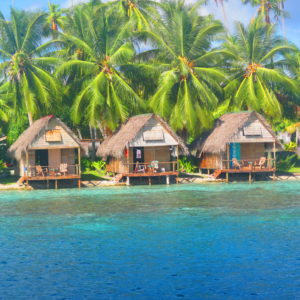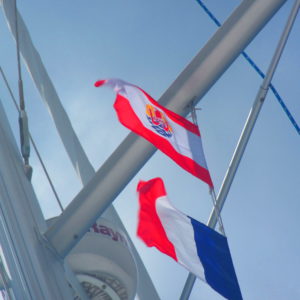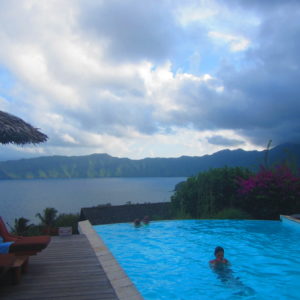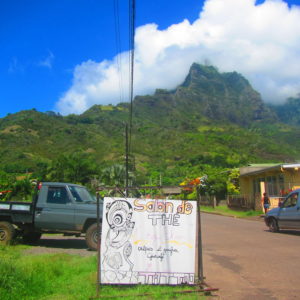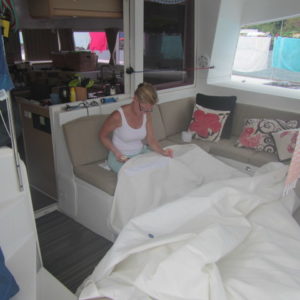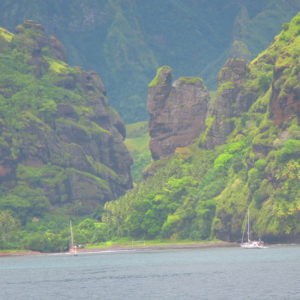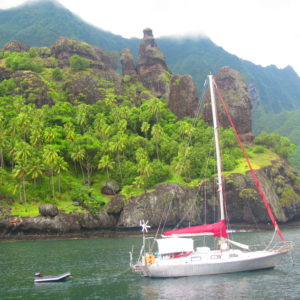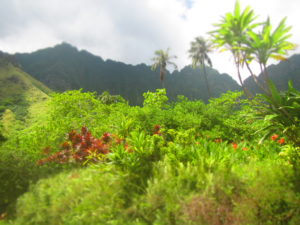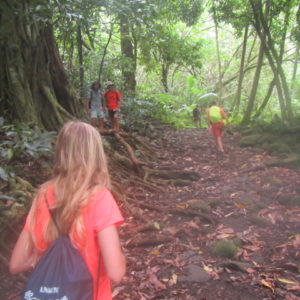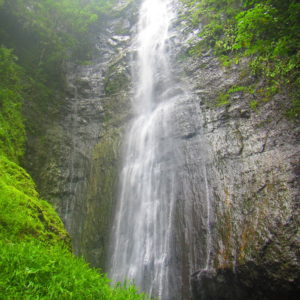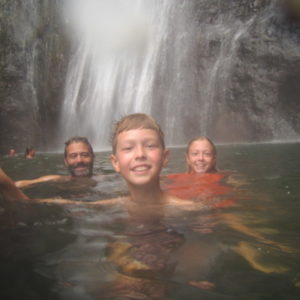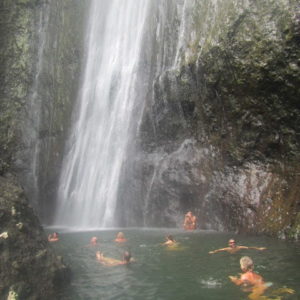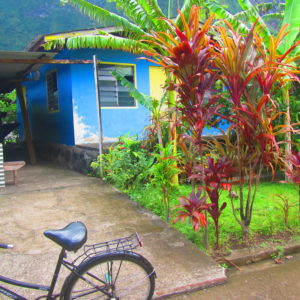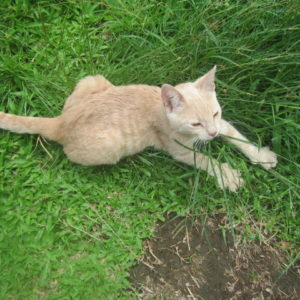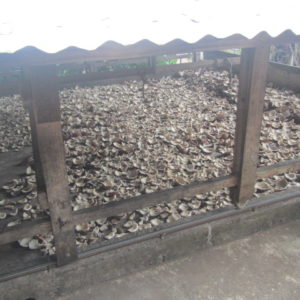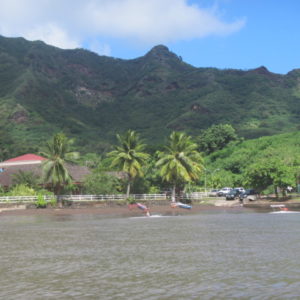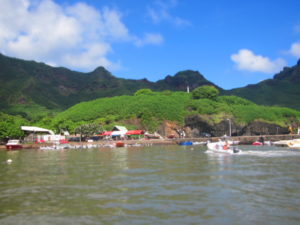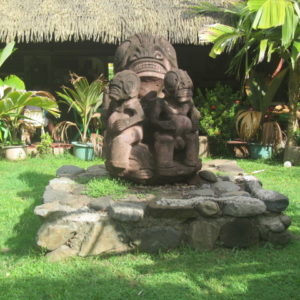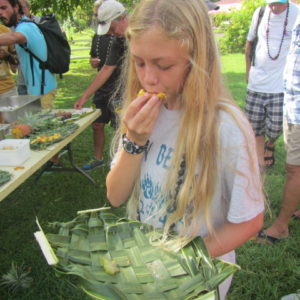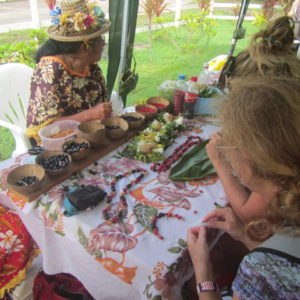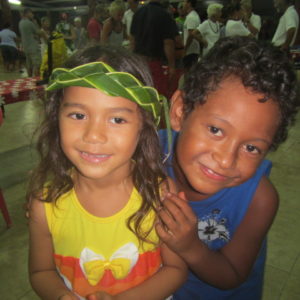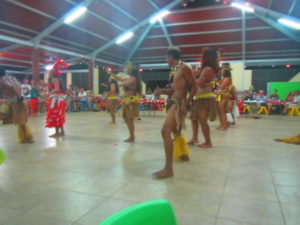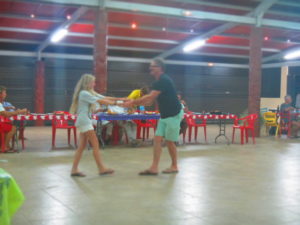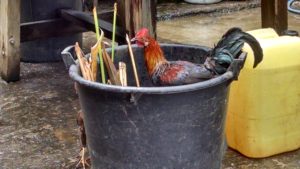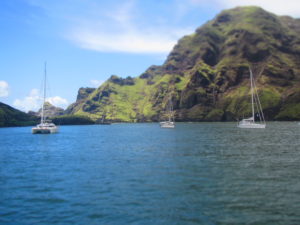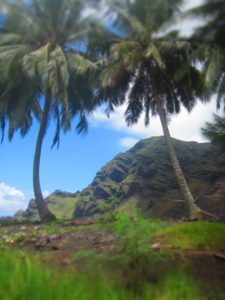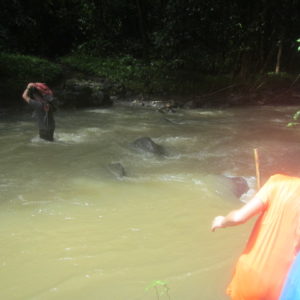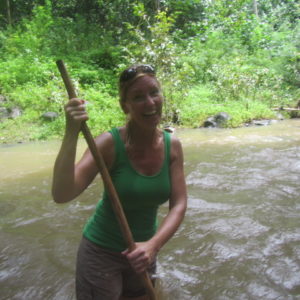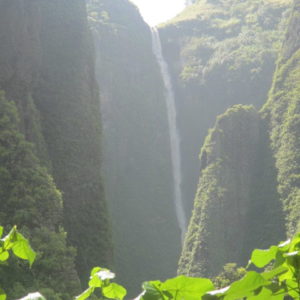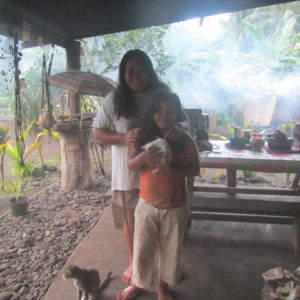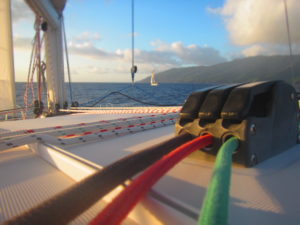We arrived into Tahiti on the 27th of April after a two-night sail. The ARC paid for two nights at the downtown Papeete Marina and we ended up staying in the marina for four nights. It was quite rainy for the first few days in Tahiti, which apparently, isn’t typical of Tahiti at this time. After a day of exploring some of the city in the rain, we weren’t much in the mood for attending the happy hour/prize giving for the ARC. We went to the Robert Wan Pearl Museum that day and it was fairly interesting. We learned quite a bit from the museum but his collection of Tahitian Pearls was way overpriced! Dan bought me a belated birthday gift of a Plumeria flower and a peacock colored Tahitian Pearl back in Fakarava (the young woman who owned her own nice shop made all of her own jewelry) and I was happy to see nothing at all similar to my necklace here in Tahiti.
Another day we went with Widago and K1W1 Beanz over to the InterContinental Resort on a day pass to use their facilities and have lunch. In part, we decided to do this for Ryan’s birthday so he could hang out and swim and play football with the other ARC kids. It was a fairly relaxing day and lunch was very good. It was like a Mongolian Grill where you choose everything you want to eat but the meats were fresh tuna, mahi, steak, and chicken rather than that “dried” type they typically offer back in the States. The kids had a lot of fun.
Before we left the marina in downtown Papeete, we decided to organize a dock party and invited all of the ARC boats that were still there, as well as a few non-ARC boats. One non-ARC French man knew barely any English (about as much as my French) but we found a common language—Spanish! So not only was I able to communicate the fact we were having the dock party but when he actually came, we spoke Spanish that evening too. A lot of people showed up that night (including some kids for our kids), and some of us stayed out way too late. That was a really fun night.
After that, we decided to head southwest to another area called Taina. There is a marina, which we ended up going to for about 4 nights to get some engine work done, and a nice anchorage with a bunch of mooring balls. We ended up choosing one that was in shallow water with a sand bottom—very inviting for swimming…and not a shark in sight! We rented a car for 24 hours and purposely had it dropped off at 4 pm so we could catch an English language movie that evening and use the car for sightseeing the next day. We went into Papeete to see “Secrets in Their Eyes” (in English with French subtitles and it apparently came out in America last year) and it was nice because we haven’t seen a movie since St. Lucia when we saw Star Wars. What’s funny is that here in Tahiti they only have an English movie on Thursday at 5:30 and one showing on Saturday as well. Every other day and time you’re out of luck! We also ate dinner out that evening.
The next day we used the car to tour the island. We took it up to the Belvedere viewpoint after getting some breakfast. The restaurant up there was so pretty and the view was spectacular, but since we weren’t yet hungry, we just had a drink. I was happy; they had a friendly orange tabby cat, and a beautiful, clean bathroom with a gorgeous open view (and good soap AND toilet paper—rare in a lot of places in Tahiti!). What more can you ask for? While we were there, the folks from Nina arrived which was also quite nice, so we stayed and talked with them for a while before moving on. Our next stop was the James Norman Hall Museum. He wrote: “Mutiny on the Bounty,” the story that was eventually turned into a few movies (one during his lifetime and one later with Mel Gibson). He was American but he married a woman who was half-Polynesian and lived for several years on the island of Tahiti. They had two children, and their daughter decided to recreate their original house and make it into a museum in honor of her father. We learned that Captain Bligh had tried to organize a mission to obtain breadfruit to feed the slaves back in the Caribbean. He eventually was successful but not on this voyage, since, as the name suggests, his crew (headed by his friend Christian Fletcher) staged mutiny because life on Tahiti with topless women was more enticing than sailing. Eventually, breadfruit made it to the Caribbean in 1799 as a result of a subsequent Captain Bligh mission. We tried breadfruit back in the Caribbean, but at the time, we didn’t know it wasn’t native and we didn’t know this story. It was actually pretty interesting to “connect the dots” with this Mutiny and our travel experiences.
The view from Belvedere
The restaurant’s kitchen at the top of Belvedere
One night in the Taina area, the folks from Paw Paw and Nina came over for happy hour and we ended up going to dinner with Nina at the marina restaurant. Widago came down to the marina via car and had dinner with us one night as well. Another day, Widago brought their boat down for a night prior to heading to Moorea. The kids all hung out together while we went out for happy hour with Guy and Ali (and met their friend, Chris, who is captain of the yacht that belongs to Google’s founder). After happy hour, everyone came back to Do Over for dinner but I nearly “poisoned” everyone with these SUPER hot peppers I had on the skewers and in the Greek salad. They were so hot! Widago left the next morning to head to Moorea. They are staying on the ARC for the whole circumnavigation so they had to keep moving ahead. Our kids got along very well with their three boys, and it was nice because Ariana is the same age as their oldest, and their two younger twins are only about nine months older than Ryan. It was sad to say goodbye because we won’t see them again until we get back to the States. They lived in Florida but intend to move to the mountains in Idaho after returning to the States; we’ll have to make a trip out west to catch up with them after so long!
Other than that, we took a bus into Papeete another day to take care of some errands (getting New Zealand dollars as we thought we were going to go to the Cook Islands, some parts at a hardware store, a dive computer battery, and a polarized lens for our nice camera).
We moved into the marina after another day or so to get our engine work done. Dan knew exactly what the issue was, but he did not have the equipment/tools to move the engine up from the compartment to access the upper oil seal on the sail drive. The Yanmar mechanics were able to complete the job in only one day, which we were definitely not expecting. We were also able to get our main sail and jib repaired here in Tahiti as well. We are back to square now!
While we were still in the marina, Cecile, Daniel and Raphael (from Heidi 2.0) took a cab down to our marina and had dinner with us on our boat. They are a French/Swiss couple with a 13 year-old son. Raphael speaks very little English but Ari managed to find a few games they could play without having to use too much language.
Finally, we ordered an Iridium Go Satellite phone, which will not come in for about 10 days, so we decided to leave Tahiti and head to Moorea rather than wait. Dan will likely take a ferry back to Tahiti to get it out of customs (it is only 10 miles away by boat and the teens on Moorea have to attend high school in Tahiti everyday so it is a typical commute). Duty taxes are pretty ridiculous. You have to pay 35% on top of the cost of the item, the shipping AND the insurance amount. So basically add about $450 onto what we had to pay for the phone to begin with.
So, now we are in Opunohu Bay, Moorea, thoroughly enjoying this island. Tahiti was nice for its shopping and movie theater, but it was too crowded, too full of traffic and not as you picture a beautiful, tropical, Polynesian island to be. Moorea, in contrast, seems to be the “happy medium.” It is mountainous with great reef, and I can’t wait to explore everything here.
Stay posted!
